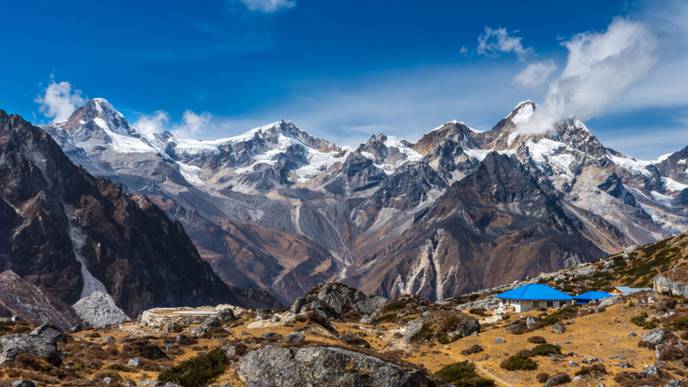COVID-19 Pandemic Reduced the Melting Rate of Himalayan Glaciers

12/26/2023
In an era where climate change poses a significant threat to natural resources, recent research highlights a glimmer of hope for the Himalayan glaciers.
The findings suggest that reducing air pollution to levels experienced during the COVID-19 lockdowns could significantly slow the melting of these glaciers, crucial for billions of people in Asia.
Impact of reduced air pollution
During the coronavirus pandemic in 2020, the world witnessed an unprecedented reduction in industrial activities and transportation, resulting in cleaner air. This period offered a unique opportunity for scientists to study the effects of reduced air pollution on the environment, particularly on the Himalayan glaciers.
An international team, including researchers from India, Germany, and the UK, analyzed data from this period and found that less soot deposition on the glaciers led to a decrease in snowmelt by 0.5 to 1.5 mm per day.
The Himalayan glaciers: A critical resource
The Himalayas and the Tibetan highlands form the largest snow-covered region outside the polar areas. The meltwater from these glaciers is a lifeline for rivers in India and China, supporting agriculture, hydropower, and the economies of these nations.
Approximately 4 billion people in South and East Asia depend on the Himalayan snowmelt for their annual fresh water supply.
However, global warming has already caused a significant reduction in the Himalayan glacier area, making the preservation of these glaciers more crucial than ever.
While climate change and its resultant higher air temperatures and precipitation changes are long-term challenges, short-term factors like the deposition of light-absorbing particles, including dust and soot, are also major contributors to glacier melting.
The study revealed that reduced emissions during the COVID-19 lockdowns led to less soot and greenhouse gases polluting the air, which, in turn, resulted in a substantial decrease in snowmelt.
The research team utilized the ECHAM6-HAMMOZ chemistry-climate model with updated soot-snow parameterization for their analysis.
Findings: COVID slowed Himalayan glaciers’ melt
This model was complemented by data from NASA’s Moderate Resolution Imaging Spectroradiometer (MODIS) and ground-based measurements from Aerosol Robotic Network (AERONET) stations in Pakistan and Tajikistan.
These comprehensive data sets helped the scientists understand the impact of reduced air pollution on the snow and atmospheric conditions in the region.
The findings are clear: reduced anthropogenic air pollution leads to less soot on snow, which in turn reduces snowmelt. During the lockdown period, there was a 25 to 70 mm decrease in snowmelt compared to the 20-year average. This resulted in an increased water storage due to reduced surface water runoff.
“The aerosol optical thickness (AOD), i.e. the atmospheric opacity, over this region decreased by around 10 per cent in April 2020 compared to before the pandemic. This is supported by measurements from MODIS, which also show a reduction in AOD compared to the average of the last 20 years,” reports Dr Suvarna Fadnavis from the Indian Institute of Tropical Meteorology (IITM).
Dr. Bernd Heinold from TROPOS adds, “In the model, we were able to show that the decrease in air pollution reduced snowmelt in spring 2020 by 0.5 to 1.5 millimeters per day and thus reduced the runoff meltwater in the year by up to half.”
Prof. Ina Tegen from TROPOS emphasizes the importance of this discovery, saying, “Our results make it clear that of the two processes causing the retreat of the Himalayan glaciers – global climate change and local air pollution – a reduction in air pollution in particular could be a short-term help.”
An urgent call to action
Reducing air pollution to levels experienced during the coronavirus pandemic could cut snowmelt by up to half. Such clean air measures would benefit not only the health of billions of people in Asia but also enhance the water supply, agriculture, and ecosystems across vast regions of the continent.
“Even if we were to stop CO2 emissions immediately, temperatures would not initially fall. However, our results confirm the importance of reducing short-lived climate drivers such as soot and their complementary role in CO2 mitigation. Reducing air pollution to similar levels as during the COVID-19 lockdowns in 2020 could protect the Himalayan glaciers, which are otherwise at risk of disappearing by the end of the 21st century,” Tegen concluded.
In summary, the research underscores the need for clean energy and lower-emission transport to protect the Himalayan glaciers. Such measures would not only improve air quality but also ensure sustainable water supplies, agriculture, and ecosystems in Asia.
As the glaciers currently lose nearly half a meter of ice annually, the urgency to replicate the air quality levels of the COVID-19 lockdowns becomes a critical environmental imperative.
The full study was published in the journal Atmospheric Chemistry and Physics.
—–
Like what you read? Subscribe to our newsletter for engaging articles, exclusive content, and the latest updates.
Check us out on EarthSnap, a free app brought to you by Eric Ralls and Earth.com.
—–

Facebook Comments